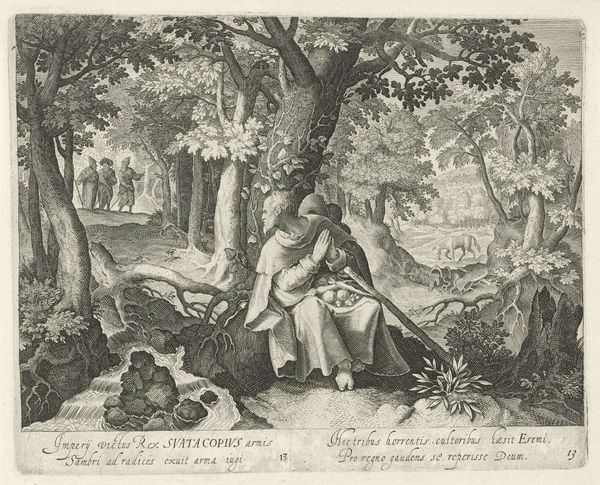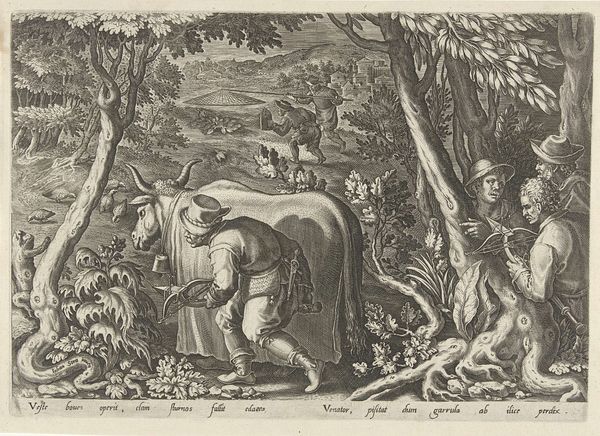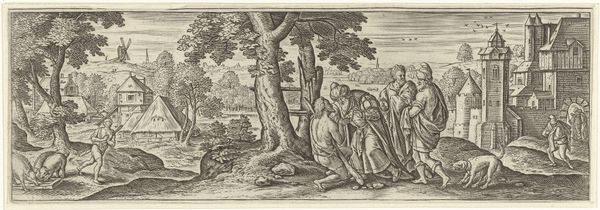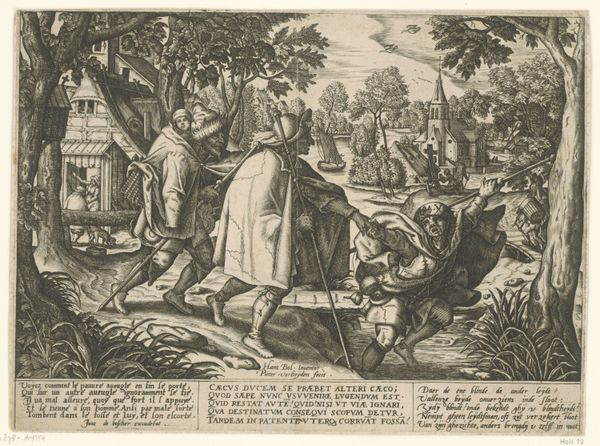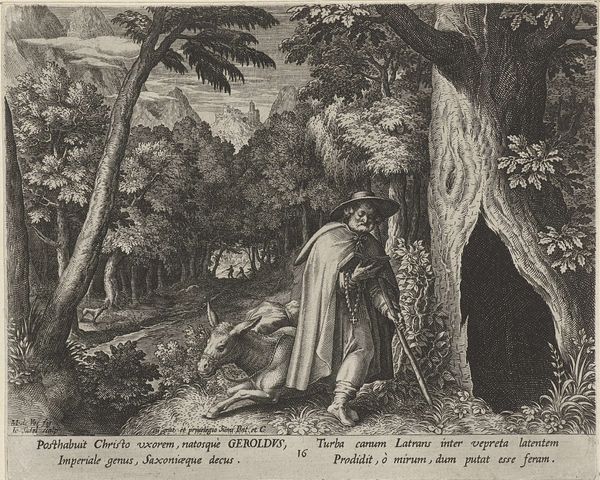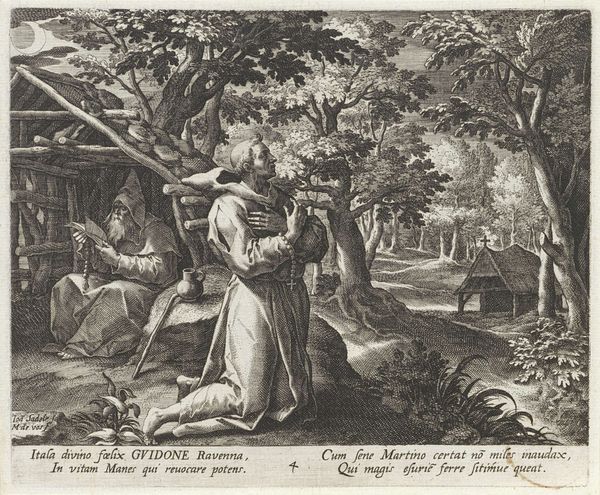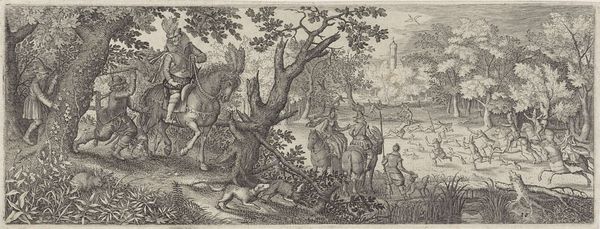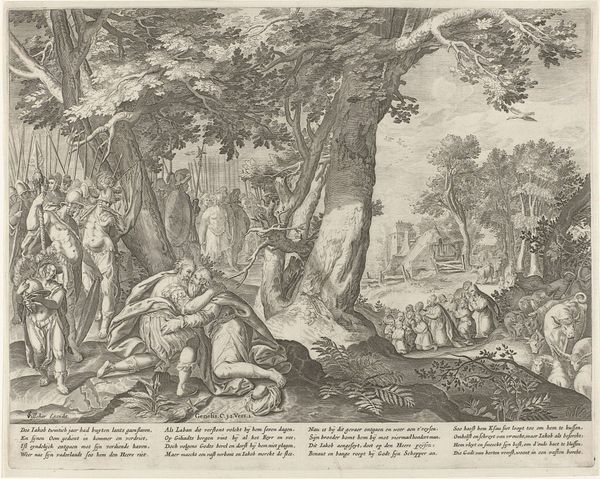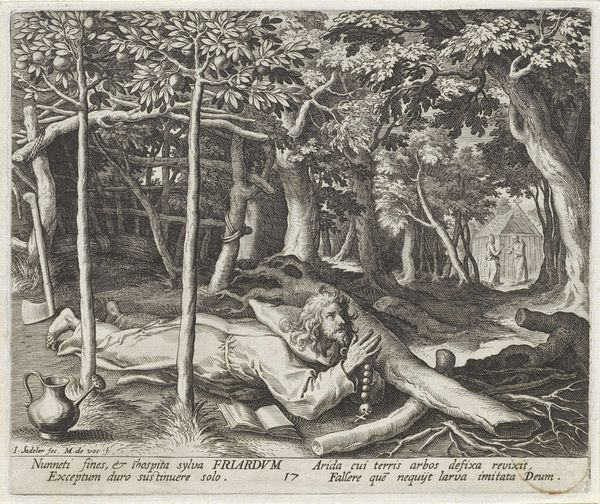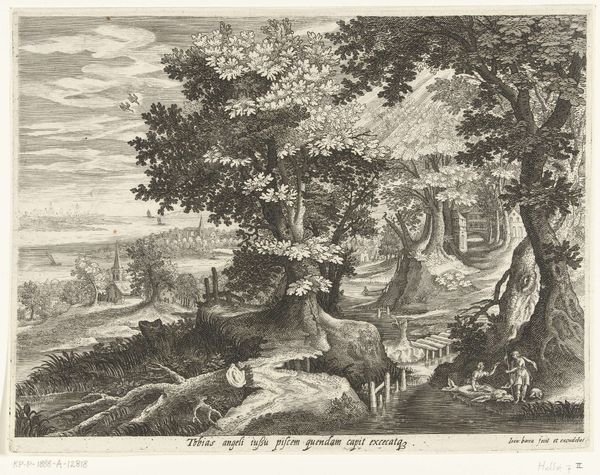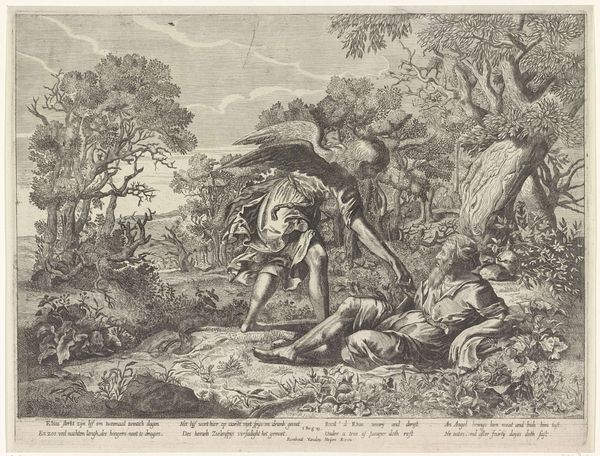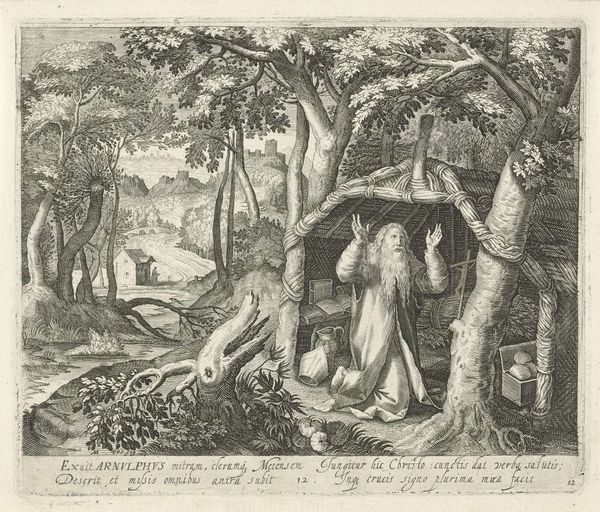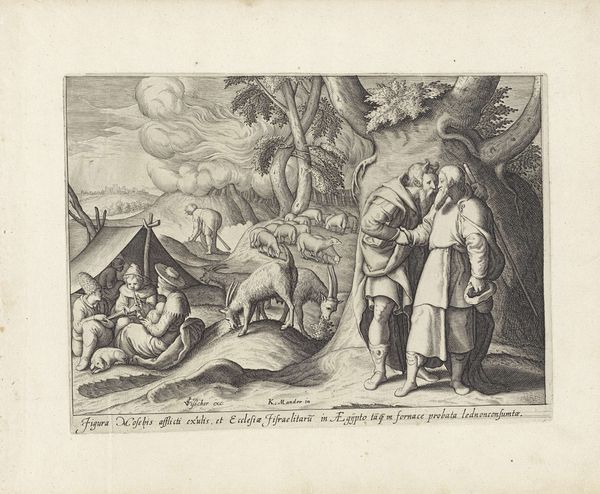
print, engraving
old engraving style
landscape
11_renaissance
forest
history-painting
engraving
Dimensions: height 169 mm, width 212 mm
Copyright: Rijks Museum: Open Domain
Curator: This is "Apollonius the Hermit," an engraving created between 1586 and 1588 by Johann Sadeler I. The Rijksmuseum houses this evocative piece. Editor: The landscape is arresting! It’s intensely detailed. You see the penitent set against this elaborate forest with light breaking through. It’s quite theatrical, almost like a stage set. Curator: Exactly! Sadeler masterfully uses the landscape to tell Apollonius's story, rooting it in a historical and spiritual context. The very act of engraving, as a reproduction method, highlights how prints mediated religious and historical narratives for wider audiences during the late 16th century. Editor: It seems Apollonius is positioned at an interesting intersection – caught between a sort of harsh austerity with his emaciated form and tattered clothes and something quite spectacular and otherworldly with the beams of divine light. The forest looks serene, but is this retreat into nature genuinely available to everyone or only the privileged few who can afford such a separation? Curator: That's a key point. Hermits were figures of great social significance, embodying ideals of piety but often reliant on the societal structures they seemed to reject. The imagery reinforced these hierarchical religious beliefs, even in depictions of withdrawal. The landscape almost seems to reinforce the dominance of heaven. Editor: It does, but perhaps also the vulnerability of the individual against a higher force, set within a nature that, although beautiful, may also be indifferent to human struggle. Consider too who has access to those narratives; to art. This makes me think of the print’s power, historically, as an accessible art form—making important moralizing tales visible to all classes and not just the aristocracy. Curator: The engraving also provided artists with ways to circulate their artistic repertoire beyond local audiences in principalities such as Bavaria, where Johann Sadeler I and his family workshop enjoyed patronage at the court of Duke William V. Editor: Considering the power dynamics and access surrounding depictions of morality is crucial for us to look closer at how stories can empower some at the expense of others, a throughline relevant in our own times, centuries after the original production of this print. Curator: A compelling demonstration of art history's ability to help illuminate those power structures that are ever present.
Comments
No comments
Be the first to comment and join the conversation on the ultimate creative platform.
